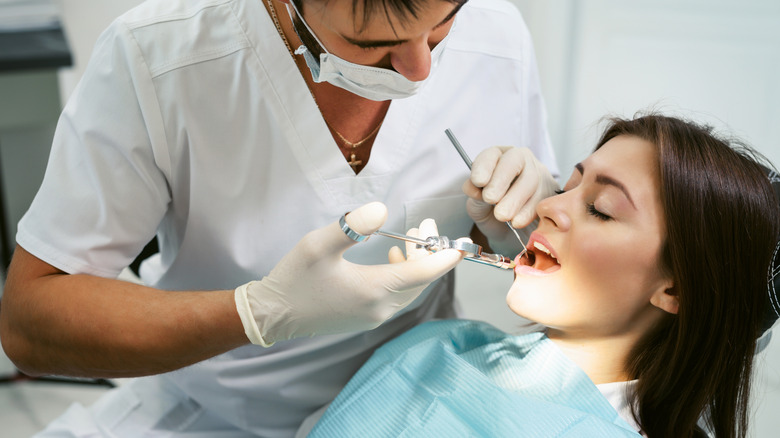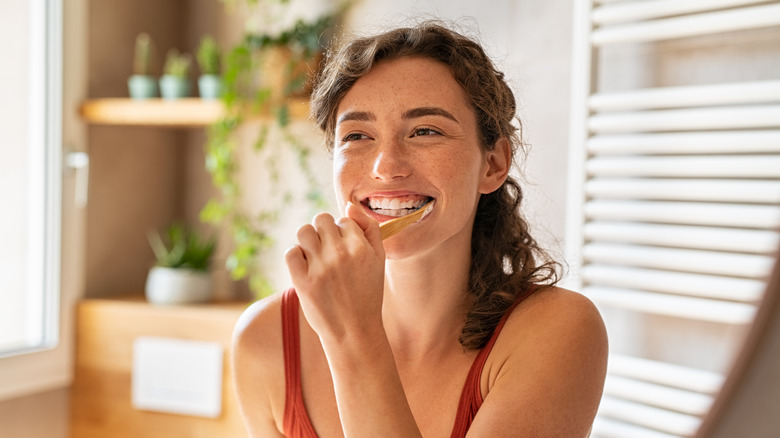What It Really Means When Your Teeth Turn Green
Green teeth can be caused by intrinsic or extrinsic staining. Intrinsic staining occurs within the dentin, or inner layer, of the tooth (via Healthline). While rare, it typically takes place during the tooth's development. This is why it mostly occurs in infants with newborn jaundice. Jaundice is caused by a buildup of bilirubin, or yellow pigment, in the bloodstream. An excess of bilirubin can impact the color of an infant's baby teeth when they're still developing. This can sometimes result in a green pigmentation of the teeth.
Extrinsic staining, on the other hand, affects the tooth's enamel, or outer layer, and is often caused by dark foods and drinks, tobacco, or bacteria. Foods and beverages like blueberries, coffee, tea, grape juice, soda, and red wine can stain the outside of your teeth. Depending on the color, your teeth may look green, yellow, brown, orange, brown, or gray. Green pigmentation can also be caused by chromogenic bacteria, which can accumulate near the gum line of your teeth.
How to prevent staining
You can prevent extrinsic staining by improving your oral hygiene and making a few lifestyle changes. Since dark or acidic food and drinks can erode your enamel and stain your teeth, you might want to limit how much you consume and how long you let them linger in your mouth (via Verywell Health). Limiting the amount of time they stay near or on your teeth will reduce the risk of staining.
Another easy way to prevent staining is to use a straw whenever you're drinking a beverage that might cause staining. This can help soda or juices bypass your teeth. It also can't hurt to practice good oral hygiene. You can do this by brushing your teeth twice a day for two minutes each and flossing regularly. This will help keep any plaque off of your teeth, prevent cavities, stave off tooth decay, and prevent stains from developing between your teeth.


